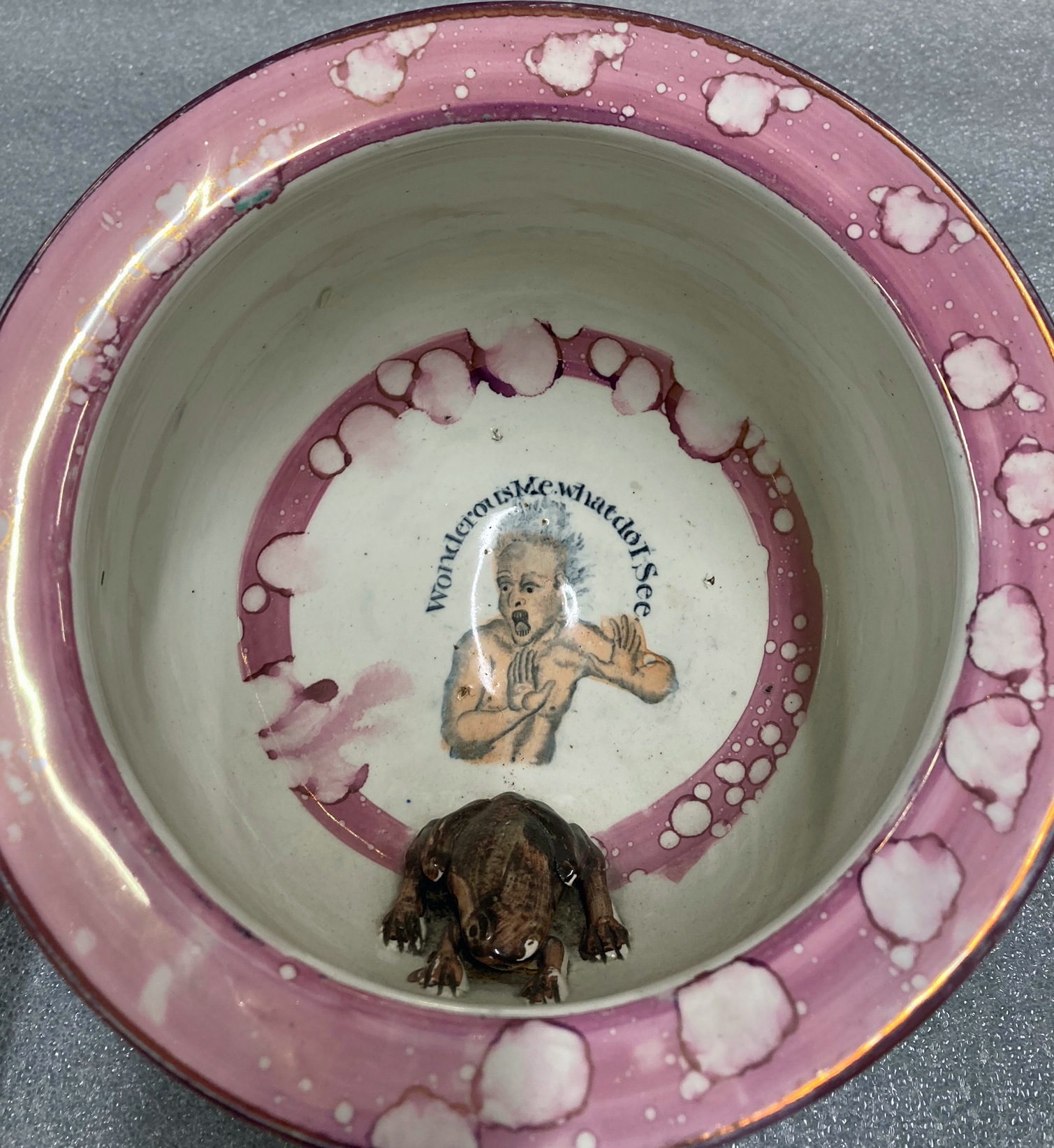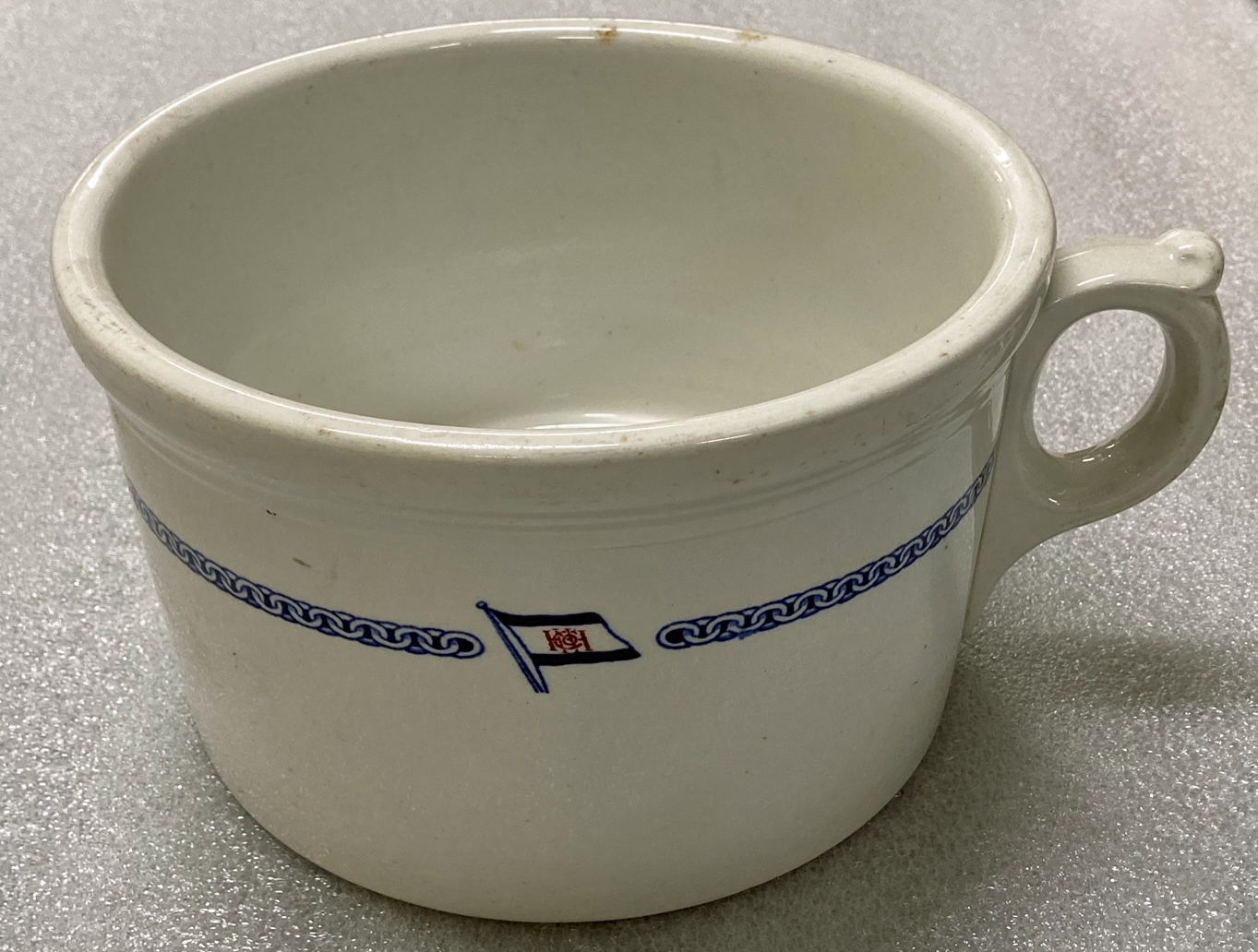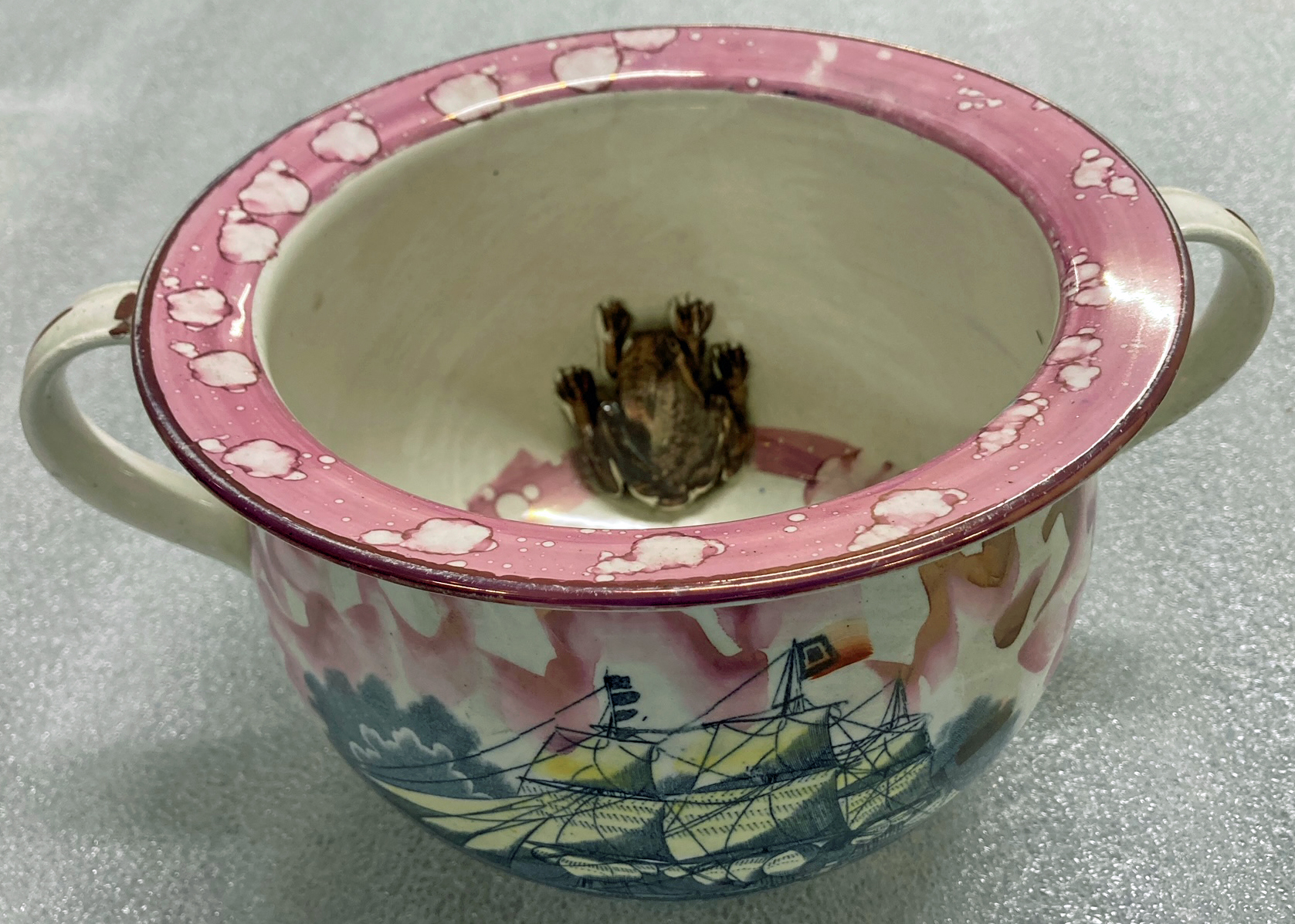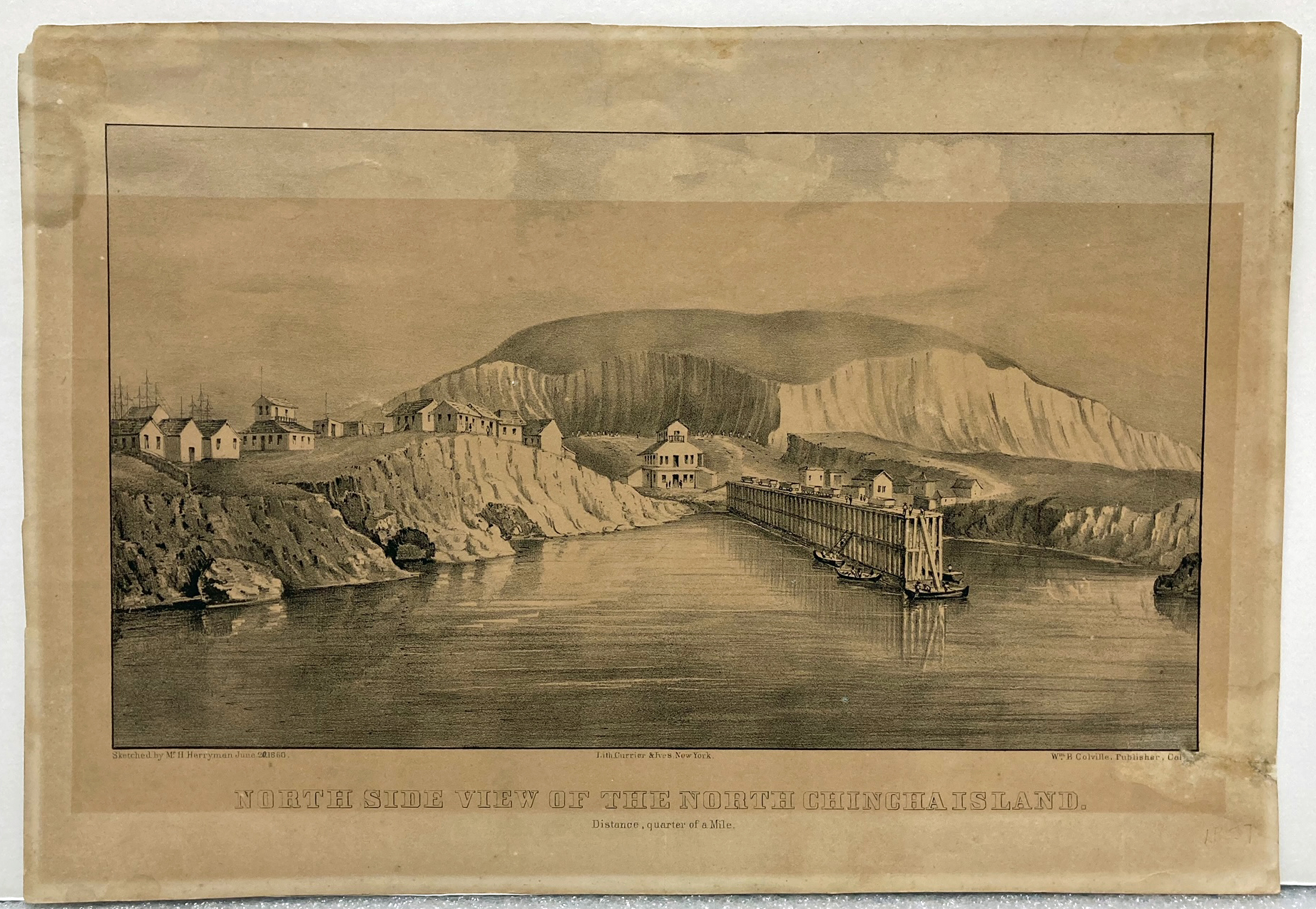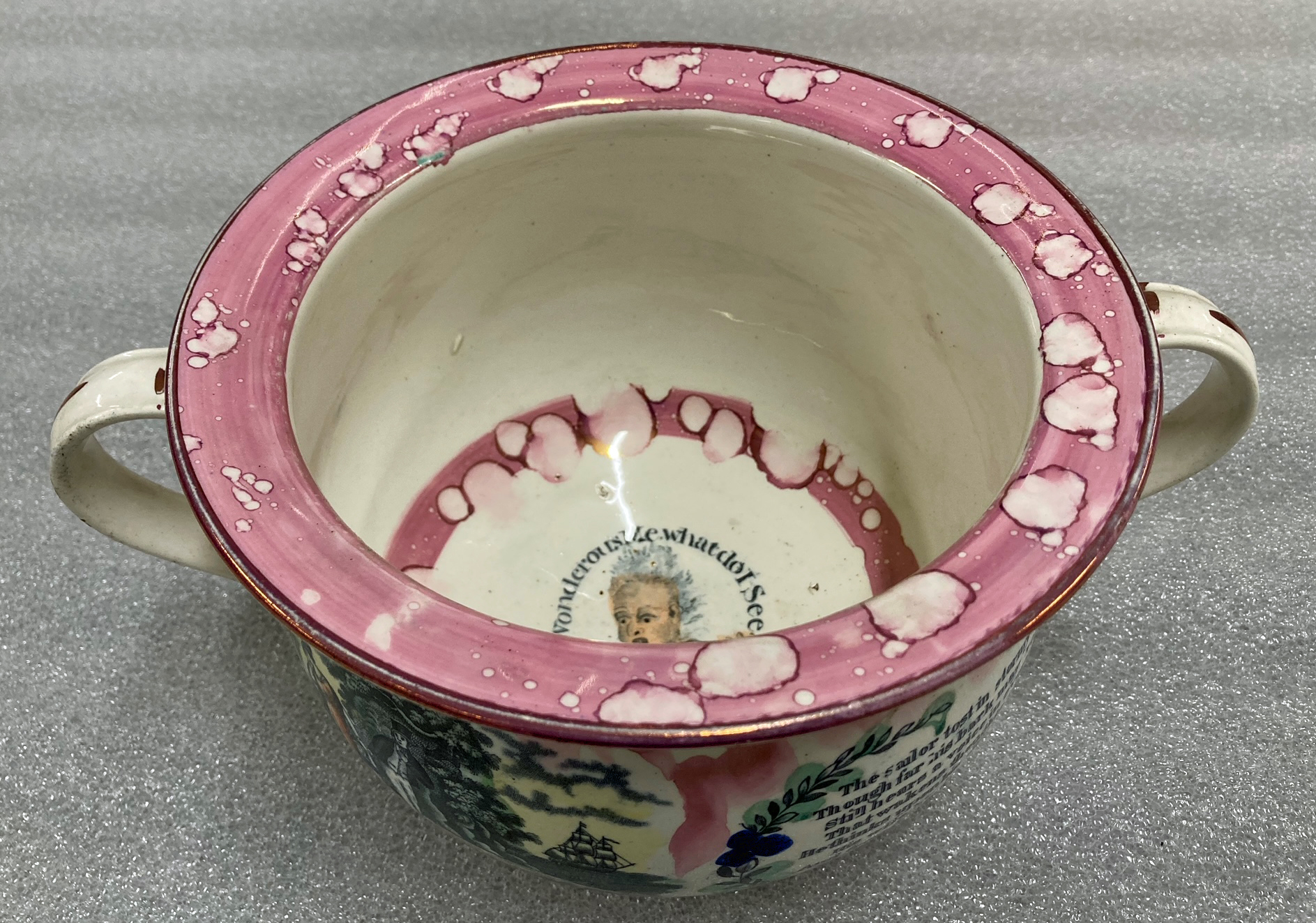
I scared myself in storage the other day. I was pulling ceramics for a researcher when I saw an odd figure painted at the bottom of a large pot. His hands were at his face, mouth, and eyes wide open in fear, and his hair was sticking all up in the air. What in the world?! I tilted it toward me to get a better look and a ceramic brown frog was there, yikes!
Turns out it was a chamber pot, which made the situation all the funnier. Now I think the little guy was reacting with disgust, not fear. I imagine him saying, “You just dropped WHAT on me?!” Chamber pots were the early bathrooms, a place to hold your business until you could dispose of it. As a person living with indoor plumbing, my only response is ick. I can only imagine the smell.
Of course, with such a large and amazing Collection this was not our only chamber pot: we have three others. These were a ubiquitous part of life prior to my now beloved indoor plumbing, sometimes hidden away inside a cabinet or chair, other times tucked under a bed or table to hide away the odors.
GROSS BY TODAY’S STANDARDS, BUT THEY FILLED A NEED
I had heard of chamber pots, but my first actual encounter with one was in the collection of a historic house where I worked in Connecticut. I loved it there, but the winters were harsh. Just imagine walking outdoors in the middle of night, in two feet of fresh-fallen snow, cold wind blowing, to use the restroom. At that point, the chamber pot has some appeal.

Chamber pots date back to ancient Egypt and ancient Greece. They were a necessary fact of life. The people then may not have understood germs and sanitation the way we do today, but they knew enough to know you didn’t want to leave your poo laying around in the house.
I found it fascinating that there were special chamber pots designed just for women. We have to search for dress pants with functioning pockets, but customized chamber pots? Priorities are a funny thing.
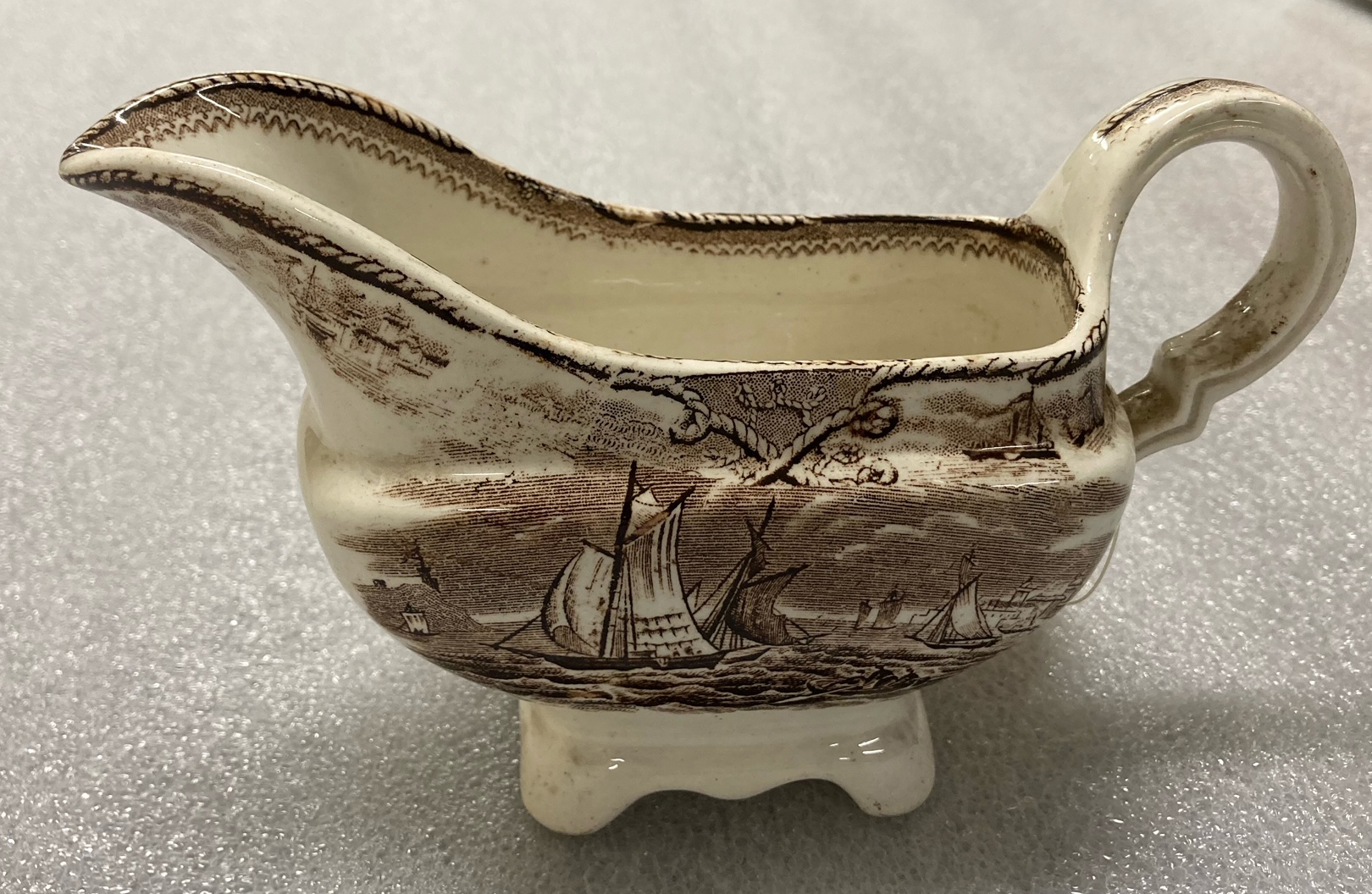
Many people today don’t know that detail about women’s chamber pots and end up calling these gravy boats because they are often decorated just like your salad plate. You’ll be happy to know that I searched our collection of gravy boats, and did not find any with a slightly turned in tip, marking it as a container for your number one, rather than grandma’s number one gravy recipe.
But you might want to check your heirloom china before you pull it out at Thanksgiving, just saying.
CHAMBER POTS WITH A SIDE OF DANGER
I got curious and started to look for historical references to chamber pots. I found a newspaper article from The Ipswich Journal in England dated September 1746 that describes a murder trial. Apparently Mr. Ashton fell out of bed in the middle of the night while holding his chamber pot, or may have landed on it. Either way, the ceramic shards cut him just above the collar bone and he quickly bled to death.
His roommate, Mr. Brinkley, was the suspected murderer but thankfully many witnesses testified that they were dear friends and it was all a tragic accident. They even used examples from other unfortunate people who had fallen on their chamber pots to compare the puncture marks. Early forensic science?
But don’t get fooled into thinking this was just a useful object in the early days before modern technology. I also found an article from 1943 from Chilliwack, British Columbia, Canada. It discussed WWII wartime shortages, and these were not your typical bread, gasoline, and metal shortages. In this case the paper reported, “Nope, there ain’t a chamber pot, new or used, for sale in town, according to usually reliable sources.”
BACK TO OUR MARITIME FROG
The chamber pot with the startled figure is a Sunderland chamber pot, which were noted for their inclusion of the ceramic frog to startle users. Congratulations, your little trick still works more than 150 years later. But they may also have been useful for aiming as well, no Cheerios in a toilet when you have a frog!
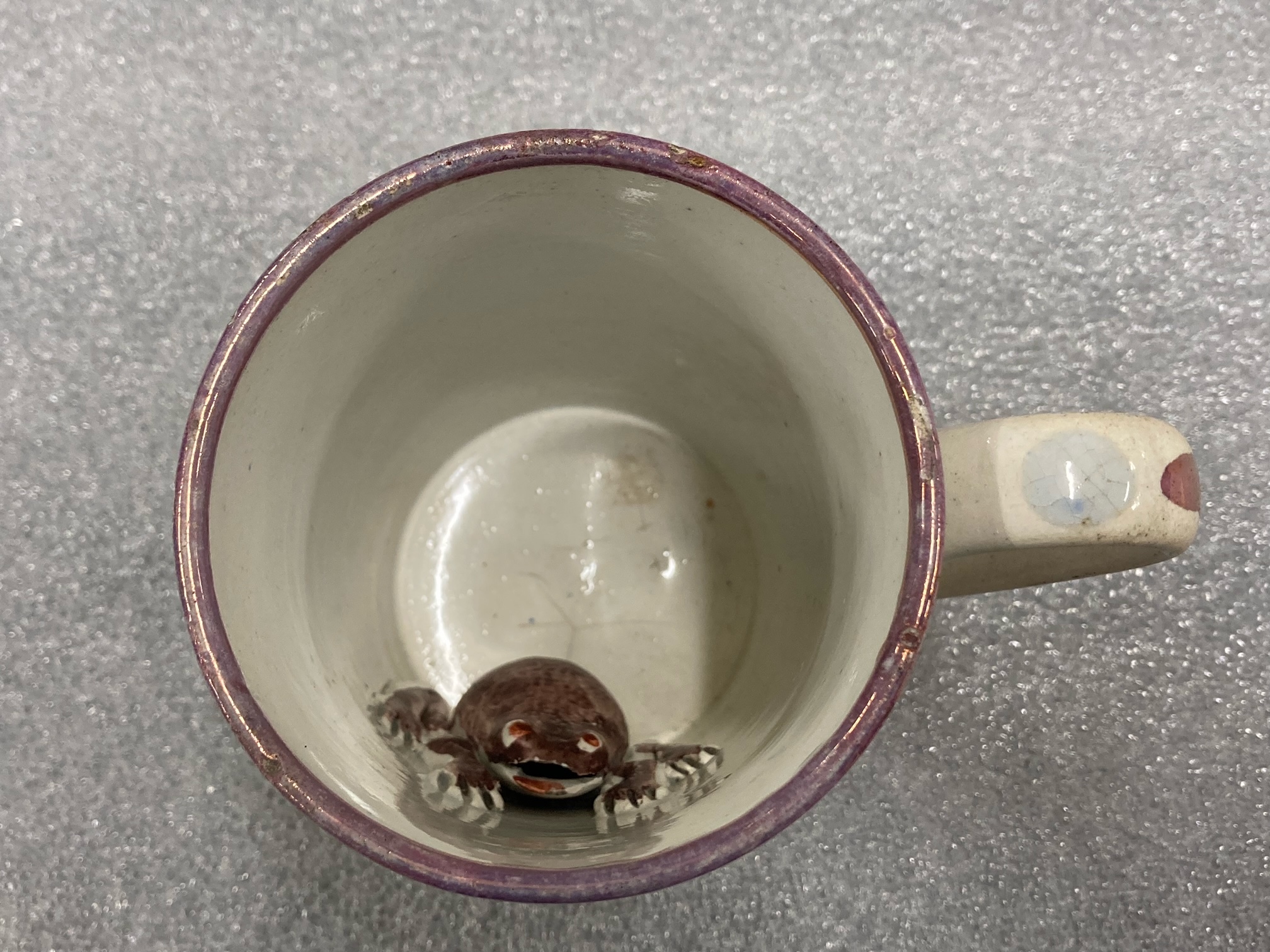
So how does all of this relate to our maritime Collection? Well, if you were on a ship that did not stop your regular bodily functions. The type of waste disposal system on a ship completely depended on the type of ship and your status on it.
Most people have heard the term “hitting the head,” but have you heard of a “seat of easement?” These were openings at the front of the ship that overhung the water, no chamber pot necessary here. But if those were occupied, which frequently occurred on larger ships with hundreds of crewmembers, then you could use a pissdale. Imagine a funnel on the side of the ship with a long pipe that led over the side.
Chamber pots were definitely present on many ships. Many of them were decorative like our little froggy, and others were more practical pewter so they didn’t break in rough seas.
ONE LAST LAUGH
After all of this I wanted to know more about the ship featured on our chamber pot. The image of the clipper ship Gauntlet first appeared in the Illustrated London News on August 27, 1853. I searched for other articles about the ship and found one from the Buffalo Morning Express on January 14, 1858. The paper reported that Gauntlet had arrived at the foot of Congress Street in Brooklyn. The ship had recently “made the voyage from Chincha Islands to Hampton Roads in 66 days, which, with one exception, is the shortest passage known.” Her cargo: guano, valuable bat and seabird poop used to make fertilizer to sustain agriculture. That’s right, our chamber pot has an image on the side of a ship carrying poop.
Like I’ve said before, it’s amazing the amount of stories that unfold when we take a few moments to answer our initial question of “What the heck is that?!” This story was too good, and too cheeky (see what I did there?) to not share with you.
